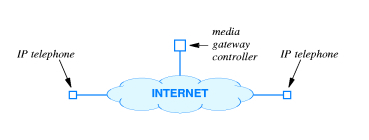The Internet arrived in Brazil in 1988 at the initiative of the academic community of São Paulo (FAPESP - Foundation for Research Support of the State of São Paulo) and Rio de Janeiro UFRJ (Federal University of Rio de Janeiro) and LNCC (National Computer Laboratory Scientific).
In 1989, the National Research Network (RNP) was created by the Ministry of Science and Technology. institution with the purpose of initiating and coordinating the provision of Internet access services in the Brazil; as a starting point, a backbone known as the RNP backbone was created, connecting educational institutions to the Internet.
This backbone initially interconnected 11 states from Points of Presence (POP - Point of Presence) in their capitals; linked to these points, some regional backbones were created in order to integrate institutions from other cities to the Internet; as examples of these backbones we have in São Paulo the Academic Network at São Paulo (ANSP) and in Rio de Janeiro the Rede Rio.
The commercial exploration of the Internet started in December/1994 from a pilot project by Embratel, where they were allowed Internet access initially through dial-up lines, and later (April 1995) through dedicated access via RENPAC or E1 lines.
In parallel to this, as of April 1995, RNP began a process for commercial deployment of the Internet in Brazil, with a series of steps, between the what is the expansion of the RNP backbone in terms of speed and number of POP's, in order to support the commercial traffic of future networks connected to these POP's; this backbone from then on was called Internet/BR.
A first stage of the expansion of this backbone was concluded in December/1995, with the creation of POPs in more states still remaining; in addition, some companies (IBM, UNISYS, Banco Rural) announced in 1996 the opening of their own backbones.
Internet Administration in Brazil
In Brazil, the highest consultative body is the Internet Management Committee; created in June/1995 on the initiative of the Ministries of Communications and Science and Technology, it is composed of members of these Ministries and representatives of commercial and academic institutions, and aims to coordinate the implementation of Internet access in Brazil.
In terms of networks, RNP manages the Internet/BR backbone, through the Internet/BR Operations Center; the networks connected to this backbone are managed by local institutions, for example FAPESP, in São Paulo.
Linked to RNP there is also the Internet Information Center/BR whose main objective is to collect and make available information and products in the public domain, in order to assist the deployment and connection to the Internet of local networks.
Do not stop now... There's more after the advertising ;)
Would you like to reference this text in a school or academic work? Look:
SCHOOL, Team Brazil. "Internet in Brazil"; Brazil School. Available in: https://brasilescola.uol.com.br/informatica/internet-no-brasil.htm. Accessed on June 29, 2021.

